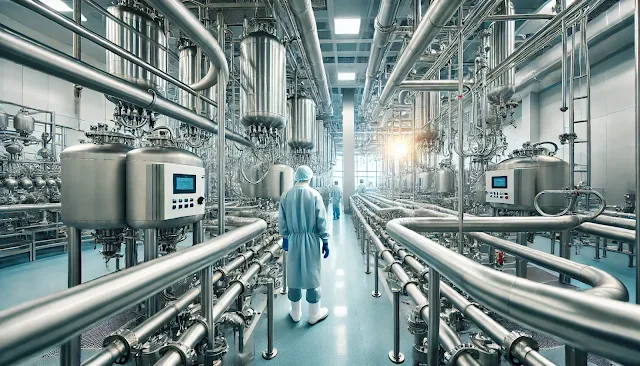Ad Code
Translate
What is Ozempic (semaglutide)? (Updated in 2025)
January 30, 2025
Smart strategies for trading on crypto exchanges
April 23, 2025
How To Find Suitable Properties In Cyprus?
May 22, 2025
Posture Bra: Improving Back Support and Comfort
April 23, 2025
How Proper Tubing Can Improve Food Safety in Manufacturing
Khabza Mkhize
January 06, 2025

Food safety is a critical concern in manufacturing facilities where products move through various processing stages. One often overlooked yet essential component of food safety is the tubing system used to transport liquids, ingredients, and processed materials. Proper tubing selection, installation, and maintenance can significantly impact product quality, prevent contamination, and ensure compliance with food safety regulations. Let's explore how the right tubing choices and practices can enhance food safety throughout the manufacturing process.
Choosing Sanitary Tubing Equipment
The foundation of a safe food processing system begins with selecting appropriate sanitary tubing equipment. High-quality food-grade tubing must meet stringent FDA requirements and be constructed from materials that won't leach chemicals or affect product taste. Stainless steel tubing, particularly 316L grade, offers excellent corrosion resistance and cleanability, making it ideal for food contact applications. For flexible tubing needs, materials like platinum-cured silicone provide the necessary durability while maintaining product purity.The features to consider in sanitary tubing include:
- Smooth interior surfaces that prevent product buildup and make cleaning more effective
- Proper wall thickness to withstand pressure and temperature variations without compromising integrity
- Sanitary end connections that eliminate dead spaces where bacteria could grow
Maintaining Clean-in-Place Compatibility
Modern food manufacturing facilities rely heavily on Clean-in-Place (CIP) systems to maintain sanitary conditions. Tubing systems must be designed to accommodate these cleaning processes effectively. This means incorporating the right slope and drainage points to prevent liquid pooling and ensuring all components can withstand regular exposure to cleaning chemicals and high temperatures. Proper tubing layout also includes strategic placement of access points for inspection and manual cleaning when necessary.Preventing Cross-Contamination
Strategic tubing design plays a crucial role in preventing cross-contamination between different products and processes. This involves careful consideration of routing paths, adequate separation between incompatible materials, and proper identification systems. Color-coding and clear labeling help operators identify different lines and their contents, reducing the risk of incorrect connections or mix-ups during maintenance.Regular Inspection and Maintenance Protocols
Even the best tubing system requires consistent monitoring and maintenance to maintain food safety standards. Regular inspections can identify potential issues before they become serious problems. This includes checking for signs of wear, damage, or degradation that could compromise product safety. Establishing clear maintenance schedules and documentation procedures ensures that all components remain in optimal condition and comply with food safety regulations.Temperature Control and Material Compatibility
Food processing often involves extreme temperature variations, making proper tubing selection crucial for maintaining product safety. The chosen tubing must maintain its integrity across the full range of operating temperatures without degrading or releasing harmful substances. Additionally, considerations must be made for thermal expansion and contraction to prevent stress on connections and potential leak points.Implementing proper tubing systems in food manufacturing facilities is not just about meeting regulatory requirements – it's about ensuring consistent product quality and protecting consumer health. Manufacturers can significantly reduce contamination risks and improve food safety by investing in high-quality sanitary tubing equipment, maintaining effective cleaning protocols, and following rigorous maintenance procedures. Regular evaluation and updates to tubing systems, combined with well-trained staff and proper documentation, create a robust foundation for safe food production. As technology and safety standards continue to evolve, staying current with best practices in tubing selection and maintenance remains essential for successful food manufacturing operations.
Featured Post
Auto Insurance in Georgia: Factors, Tips, and Money-Saving Suggestions (2025 Guide)
Zizo Gala-Mkhize-
July 09, 2025
Soapie Teasers
Sister Sites
Most Popular
List of 6,000+ Dofollow Commentluv Blogs FREE (Updated 2025)
January 16, 2025
Smart strategies for trading on crypto exchanges
April 23, 2025
Popular posts
Footer Menu Widget
Mashable is a global, multi-platform media and entertainment company. For more queries and news contact us on this Email: info@mashablepartners.com
Created By Blogspot Theme | Distributed By Gooyaabi Templates
Created By Blogspot Theme | Distributed By Gooyaabi Templates

Social Plugin